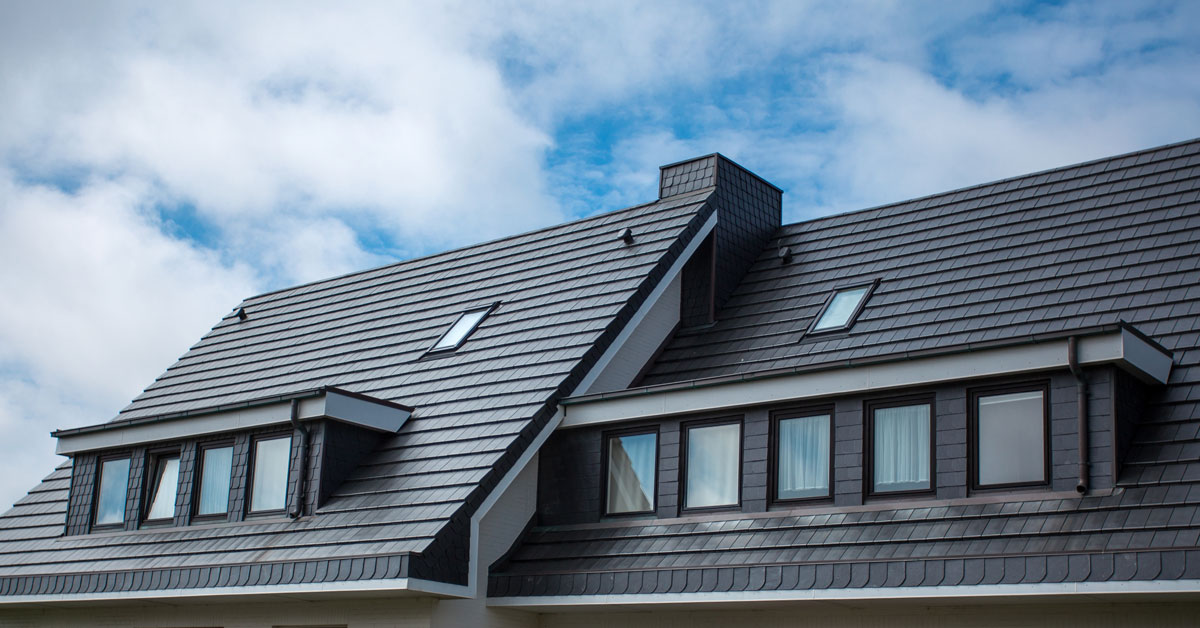Examining the Solutions Used by Roofing Companies in Gainesville Florida
Examining the Solutions Used by Roofing Companies in Gainesville Florida
Blog Article
Finest Practices for Ensuring Proper Roof Covering Air Flow
A balanced intake and exhaust vent proportion, commonly 1:300, plays a crucial duty, with intake vents ideally put at the reduced edge of the roof covering for trendy air entry and exhaust vents at the height for cozy air exit. Keeping insulation away from vents is critical to protect against air flow constraint.
Understand Air Flow Basics
Correctly recognizing air flow fundamentals is vital for guaranteeing the long life and efficiency of roof. Effective ventilation alleviates dampness buildup and temperature level extremes in the attic, both of which can lead to considerable structural damage in time. A well-ventilated roof assists in avoiding usual concerns such as mold growth, wood rot, and ice dams, which can jeopardize the stability of the roof products and the underlying structures.
The primary objective of ventilation is to help with the motion of air, enabling a constant exchange between the exterior and indoor atmospheres. This balance is accomplished with a combination of consumption and exhaust vents that interact to preserve optimal airflow. Intake vents, usually situated along the eaves or soffits, permit fresh air to enter the attic room area, while exhaust vents, usually located at or near the roofing ridge, make it possible for hot, humid air to run away.
Secret factors affecting the effectiveness of roof air flow consist of proper placement, ample sizing, and making sure that both intake and exhaust vents are unhampered. Routine examination and maintenance are important to identify possible obstructions, damage, or ineffectiveness in the ventilation system, therefore protecting the roof's performance and durability.
Kinds Of Roof Vents
Roof covering vents play a crucial function in preserving reliable attic room ventilation and, by extension, the total wellness of the roof system. Various types of roof covering vents are readily available, each with one-of-a-kind advantages tailored to certain roof covering needs.

Soffit vents are mounted under the eaves and work in tandem with roof vents to guarantee a balanced intake and exhaust system. By allowing cooler air to get in from below, soffit vents assist in the expulsion of warm air via top vents. Gable vents, situated on the exterior walls of the attic room, offer an additional effective remedy, specifically in homes with saddleback roofs.
Analyze Your Existing Ventilation

Next, think about the age and condition of your roof materials and air flow parts. Older systems might not comply with present building regulations or might have degraded in time, reducing their performance. Conduct a comprehensive examination to important source determine any indicators of damage, such as corrosion, damage, or voids that might jeopardize the system's performance.
Furthermore, measure the attic temperature level and moisture degrees. High temperatures and moisture can show inadequate air flow.
Installation Best Practices
Efficient installment of roofing air flow systems is critical for making sure optimum efficiency and longevity. Proper setup begins with recognizing the particular air flow demands of the structure and the roof covering it covers. This includes computing the correct proportion of intake to tire vents, typically adhering to the 1:300 policy, which specifies one square foot of air flow for every single 300 square feet of attic flooring space.

The placement of vents is just as crucial. Consumption vents need to be set up at the roofing system's reduced side, frequently in the soffits, to permit amazing air to enter. Exhaust vents, on the other hand, need to be mounted near or at the roof's peak to assist in the exit of warm, wet air. This creates an all-natural airflow that helps keep temperature and wetness equilibrium within the attic area.
Seal all air vent links meticulously to prevent air leaks and prospective water seepage. Usage high-grade materials and follow supplier guidelines to guarantee longevity and effectiveness. Additionally, incorporating ridge vents with baffles can dramatically enhance airflow efficiency by avoiding wind-driven rain and snow from entering the attic room.
Inevitably, precise installation of roofing air flow systems reduces possible issues such as mold and mildew development, ice dams, and architectural damage, making sure you can try this out the roof covering's honesty and the building's total wellness.
Regular Upkeep Tips
Uniformity in upkeep methods is basic to ensuring the long-term performance of roof covering air flow systems. Routine inspections are essential, ideally performed biannually-- in the springtime and fall. During these evaluations, ensure that vents are free of debris, nests, and other blockages that might restrain air flow. Look for any signs of dampness buildup or mold and mildew, as these can suggest incorrect ventilation or leakages (roofing companies).
Make use of a soft brush or a vacuum cleaner to check out this site eliminate dust and particles from intake and exhaust vents. Be cautious not to damage the vent displays or louvers throughout the process.
Correct insulation is just as vital. Ensure that attic insulation does not block the vents, as this can drastically restrict air flow. If any type of insulation has actually moved or resolved, rearrange or replace it to preserve an efficient barrier.
Finally, change any harmed or missing out on components immediately. Broken vents, fractured shingles, or shabby blinking can all add to poor air flow and ought to be resolved immediately. Normal maintenance ensures that the roof air flow system functions ideally, thereby prolonging the life-span of the roof itself.
Conclusion
Ensuring correct roofing ventilation is vital for preserving the effectiveness and toughness of a roofing system. Adherence to the 1:300 intake and exhaust air vent ratio, paired with the tactical positioning of vents, is essential.
A well balanced intake and exhaust air vent proportion, commonly 1:300, plays a crucial role, with consumption vents preferably positioned at the lower edge of the roofing for great air access and exhaust vents at the top for cozy air leave. Intake vents, normally situated along the soffits or eaves, enable fresh air to go into the attic room, while exhaust vents, commonly located at or near the roof ridge, make it possible for hot, humid air to get away.
Soffit vents are installed under the eaves and work in tandem with roof vents to ensure a well balanced consumption and exhaust system. By permitting cooler air to enter from below, soffit vents help with the expulsion of hot air through upper vents. Adherence to the 1:300 consumption and exhaust air vent proportion, combined with the critical positioning of vents, is important.
Report this page